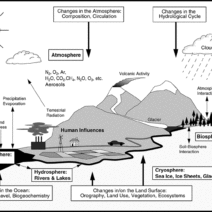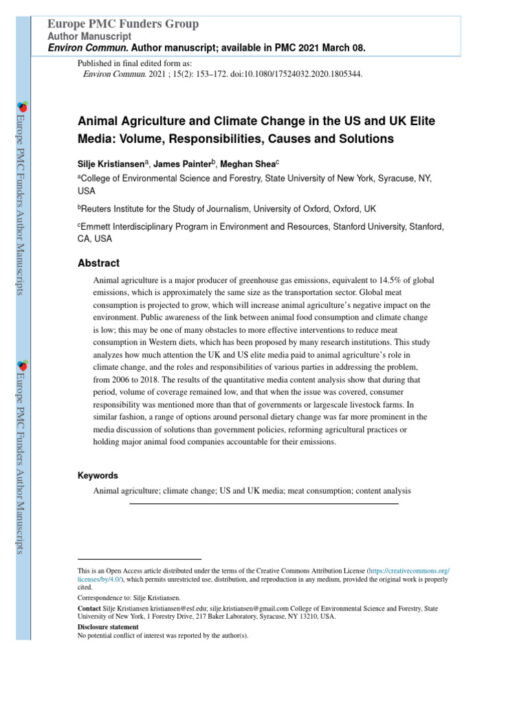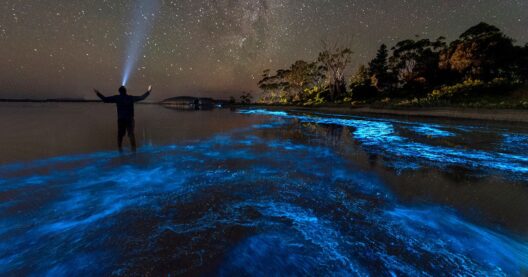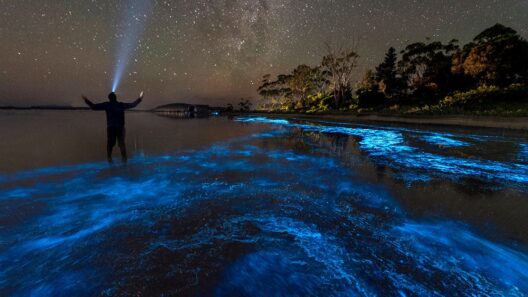As we navigate the precipice of environmental change, one of the most striking narratives unfolds beneath the undulating waves of oceanic expanses. The salinity of our seas may be constant in taste, but the chemistry of ocean water is undergoing profound alterations, influenced inexorably by climate change. This phenomenon, often overlooked, carries ramifications that extend beyond the surface, demanding our urgent attention.
Global warming, primarily driven by anthropogenic emissions, has led to a rise in sea surface temperatures. The absorption of excess heat by oceans alters water density, wreaking havoc on marine ecosystems. One immediate impact is the increasing stratification of ocean layers. As surface waters warm, they become less dense, creating a barrier that impedes the downward diffusion of nutrients from the upper layers to deeper waters. This disruption significantly affects phytoplankton productivity, the very bedrock of marine food webs.
Phytoplankton, microscopic organisms that photosynthesize, play an indispensable role in carbon cycling and oxygen production. A decline in their populations can trigger a domino effect, harming not just marine species but also global climate equilibria. Without these foundational organisms, the ocean’s ability to sequester carbon diminishes, exacerbating the very problem of atmospheric warming that initiated these changes in the first place.
Simultaneously, ocean acidification emerges as a critical aspect of the salinity equation. Increased carbon dioxide (CO2) levels, another byproduct of human industry, result in higher concentrations of dissolved CO2 in ocean water. This phenomenon fosters the formation of carbonic acid, causing ocean pH levels to decline. Current estimates suggest that since the onset of the Industrial Revolution, ocean acidity has increased by 30%. Such chemical changes can be lethal to calcifying organisms such as corals, mollusks, and certain plankton species, which rely on calcium carbonate for their structural integrity.
The plight of coral reefs epitomizes the intersection of global warming and ocean chemistry. These vibrant ecosystems are sensitive to temperature fluctuations; even a slight increase can lead to coral bleaching, where corals expel the symbiotic algae living within them. In a dual threat presented by acidification, the weakened corals struggle to rebuild their limestone skeletons. The loss of these habitats reverberates throughout marine biodiversity as thousands of species depend on coral reefs for shelter and sustenance. The repercussions extend to human communities that rely on fisheries and tourism associated with these vibrant underwater gardens.
A noteworthy shift in ocean chemistry also manifests in the form of diminishing oxygen levels, a phenomenon poignantly labeled as “ocean deoxygenation.” Warmer waters hold less oxygen, and the increased stratification mentioned earlier further exacerbates the issue by limiting the mixing of oxygen-rich surface waters with deeper layers. The consequence is a proliferation of hypoxic zones, or “dead zones,” where marine life cannot survive due to insufficient oxygen levels. As these zones expand, they pose a dire threat to marine ecosystems and, by extension, to global food security.
The human dimension of these changes cannot be understated. Coastal communities, particularly in developing nations, face heightened vulnerability due to their reliance on fisheries for sustenance and economic stability. The resultant shifts in species distribution as marine organisms adapt to changing conditions can lead to conflicts over dwindling resources. Moreover, the socio-economic ramifications ripple through to global markets, challenging food systems and leading to food insecurity.
Shifts in ocean chemistry also elicit profound effects on the broader climate system. The oceans play a pivotal role in regulating Earth’s climate, acting as a thermal reservoir and a significant carbon sink. As they absorb CO2 and heat, the balance of oceanic processes alters. The alteration of ocean currents and upwelling patterns can influence weather systems, leading to more extreme weather phenomena comprising hurricanes, droughts, and floods. Such changes herald a future fraught with uncertainty, demanding adaptive strategies from policymakers and stakeholders alike.
Yet, this narrative is not purely one of doom and gloom. Understanding global warming’s impact on ocean chemistry also presents an opportunity for rethinking our relationship with the ocean. Awareness is the first step toward advocacy and change. Collaborative efforts engaged in marine conservation, sustainable fishing practices, and restoration projects can play a crucial role in mitigating some of these impacts. Emphasizing the importance of reducing carbon footprints and safeguarding marine environments can catalyze a larger movement toward ecological resilience.
Furthermore, technology and innovation hold promise in addressing aspects of marine health. Nutrient management practices can be improved, and new methods for carbon capture and storage are being developed. The scientific community continues to explore how to bolster species resilience through genetic studies and breeding programs aimed at enhancing tolerance to changing conditions.
As stewards of this planet, it is incumbent upon us to reshape our narratives around the oceans and actively participate in their well-being. Through education, technological advancements, and policy advocacy, we can ameliorate the salty truths that global warming brings to ocean chemistry. The stakes are undeniably high, but by nurturing curiosity and spurring collective action, we can cultivate a future where our oceans thrive, supporting the myriad life forms and human communities that depend on them. In this ever-evolving landscape, fostering a deeper connection to the ocean could be our most potent tool in the battle against climate change.








